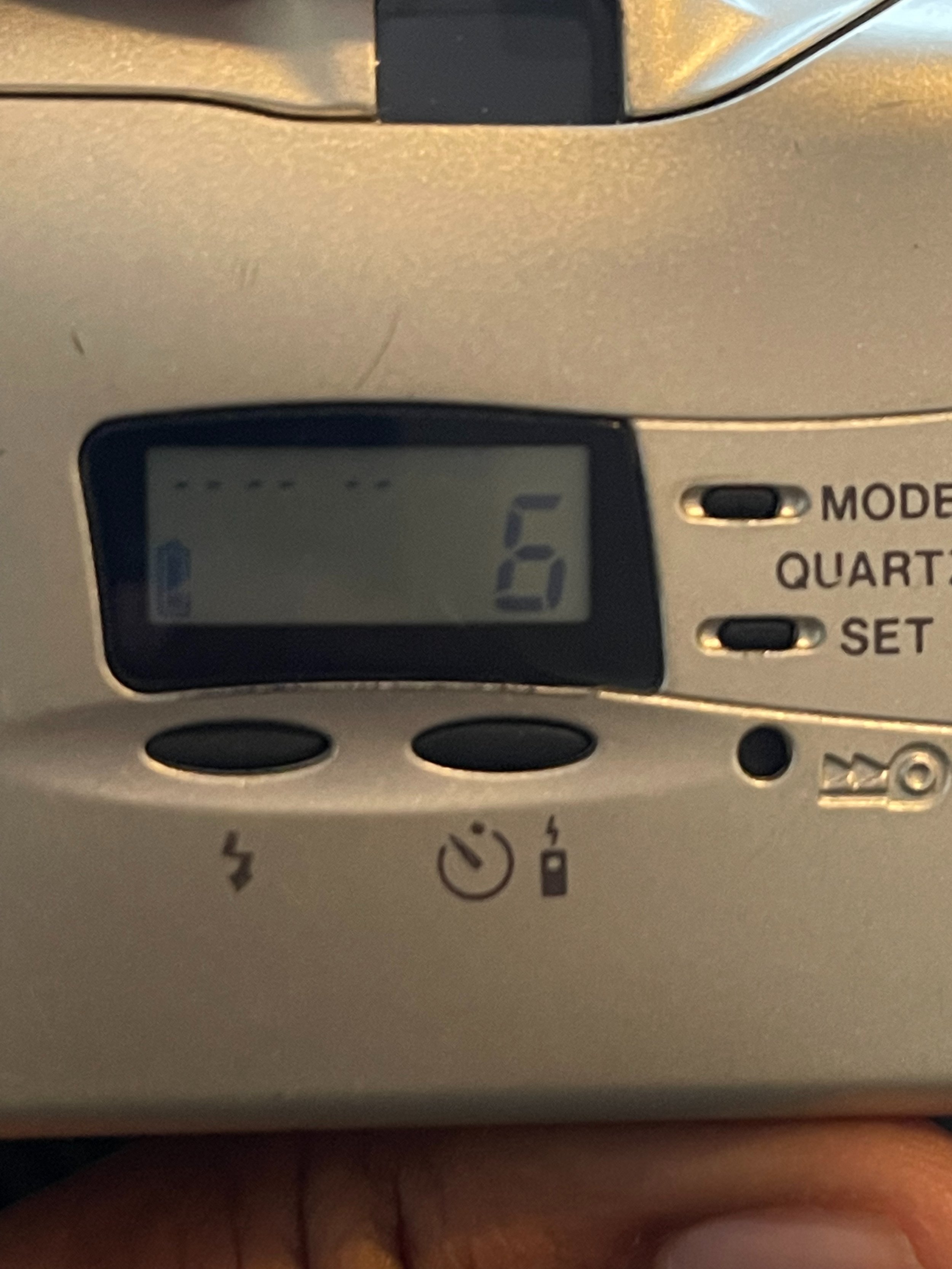Point and Shoot Review - Olympus MJU-II
For black and white film photography, I love to have a small point and shoot camera with me. Sometimes, I don't want to have a 'full' camera. My full-frame cameras, both film and digital, are heavy and sometimes obstructive. If I am having a night out with my wife or friends, I don't always want to have a larger camera with me.
However, my photographer's eye never closes. I am always looking for the following composition. My eye is always on. My eye constantly sees the next image. Because of this, I always have a small point and shoot camera with me. After owning many, my favorite right now is my Olympus MJU-II point and shoot. Let's discuss.
Describe
The Olympus MJU-II is a minimal point and shoot camera released in 1997 (a great year, it's when I graduated high school :-D ). Here is the camera in the palm of my hand.
tiny MJU in my large hands
The camera measures 108 x 59 x 35 mm or 4.25 x 2.3 x 1.4 inches, very small indeed. It fits perfectly in any pocket I have. This is a plastic camera however, the camera is all-weather. The all-weather aspect works well, especially since I tend to shoot in the rain often; I have never concerned myself with my camera being wet or not.
There is a zoom and fixed lens model. I have never cared for zoom lenses, being the kind if street photographer I am. I have the fixed lens, which is a 35mm f/2.8 large aperture lens. 35mm is one of my favorite two focal lengths for street photography work, so this camera works perfectly for me.
The camera has a sliding door that not only acts as a cover for the lens, but also as a power supply. After opening the sliding door, power is applied to the camera. The flash is also turned on when the cover slides open. More on this later.
How does this 35mm lens play out? The MJU has some great rendering and Bokeh, although you have no control over when Bokeh will be affected. As with all point and shoot cameras, the internal light meter determines both aperture and shutter speed. I find the MJU extraordinarily accurate, meaning the camera picks the correct settings for the situations I put the camera in.
Fayetteville, 2021, Olympus MJU-II
Ease of use?
Loading film into the camera is straightforward. Open the door, place your film in, and pull the excess roll around the internal roller on the camera. Then close the door. The camera will automatically load the film to the first exposure.
Fayetteville, 2021, Olympus MJU-II with timestamp
The camera can read DX coded film rated from ISO 50-3200. This ability is great but is the first concern with the camera. I am a film shooter, and I use a bulk loader for my Kodak Tri-X 400 film. The reusable film canisters I have are not DX coded. Without a true DX code, the camera 'assumes' the photographer loaded 100 ISO film. I have gotten around this problem by purchasing DX coded stickers to add to my reusable canisters.
The viewfinder is bright, and the magnification is very accurate to 35mm. However, the viewfinder is relatively small. For people with glasses or with bad vision (like I have), you may have some concerns with what you see in the viewfinder. To counter this, I tend to shoot from the hip. I have been shooting with the 35mm focal length long enough to know (generally) what will be in frame.
Autofocus with the MJU is a joy. I have put roughly 35 rolls of film through the camera. I have never had a problem with autofocus. Autofocus is done at the center of the frame. A green light in the viewfinder will show when you have found focus. I have trusted it with no problems.
The battery used for this camera is a 3-volt CR123 battery. These batteries are easily found online and are very, very cheap. Also, the camera does not seem to eat batteries at all. I changed to a new battery in 2019, and after 30 rolls, I still have a full battery.
easily fits in a pocket
Finally, I'll touch on Bokeh. Depth of field, especially when focused very close, works well. The MJU has a functional focus range of 0.35m (13.8 inches) to infinity. This means you can get extraordinarily close, if needed. Here is an example of what Bokeh could look like
Bad things
There are some concerning potential problems with the camera. Here are some things to consider. First, the camera is very 'plasticy'. For some, this may not be a concern. The plastic nature of the camera does not bother me because I am a child of the 80s and 90s when everything was plastic. The plastic feels strong and sturdy; however, I could see how some would say the MJU feels somewhat like a toy.
Olympus MJU-II LCD display. Notice battery on LCD. Also, notice flash button.
Second, as above, when you open the cover, the flash will automatically turn on. For those street photographers that are trying to be 'stealthy.' If you forget that the flash is on, this could be a concern. To turn the flash off, after opening the cover, press the flash button on the back twice. Again, I do not find this to be a problem, but some might.
Conclusion
The Olympus MJU-II is an excellent point-and-shoot camera. As metal point and shoot cameras get more expensive, now would be a great time to get a cheaper fixed lens camera. IT has some quirks, and the constant flash can be annoying. However, a fixed lens 35mm f/2.8 film camera that fits in a shirt pocket is a steal. Let me know what you think.
Maurice D Masdeu






